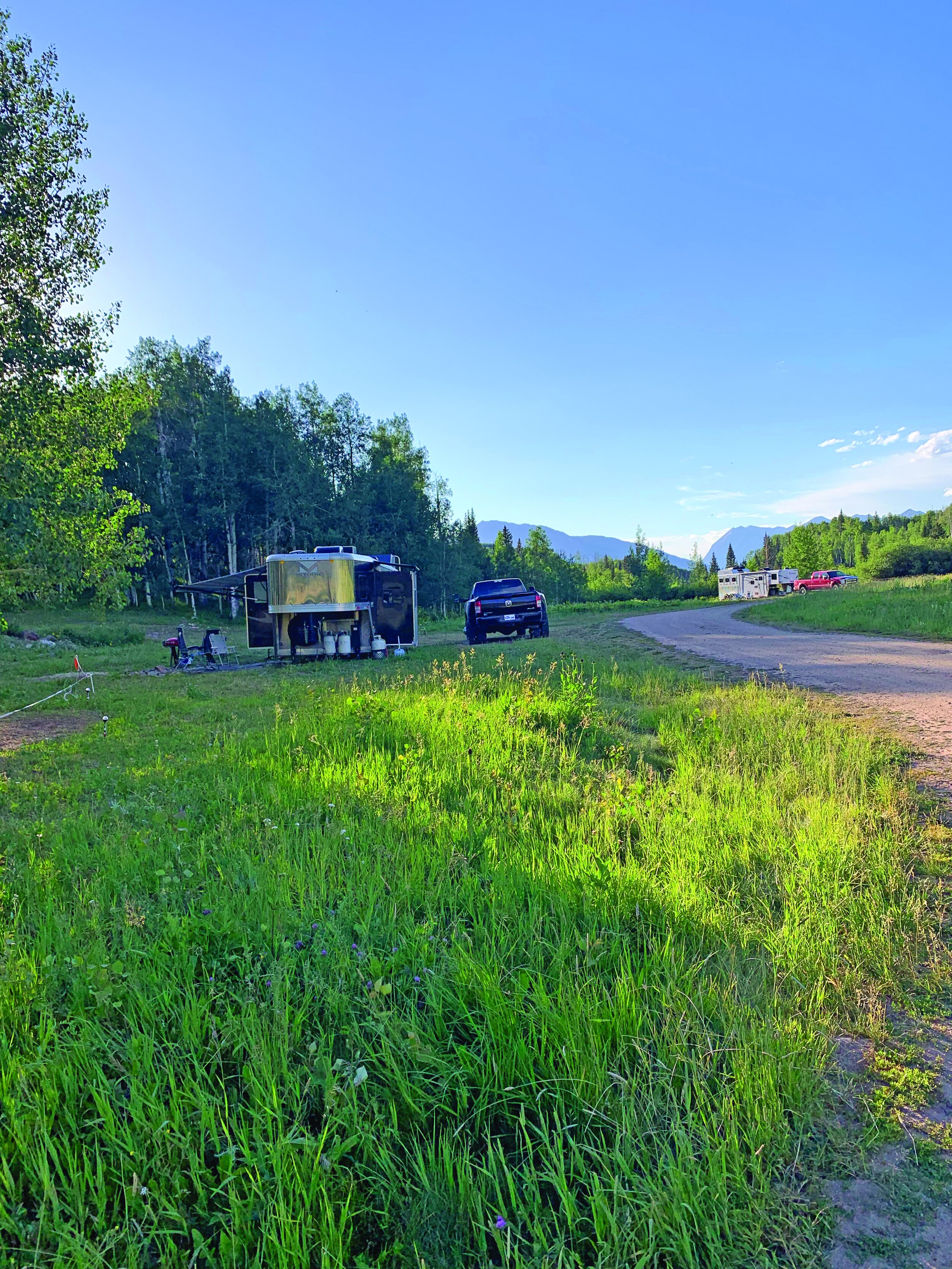Horse Ranch Park - Crested Butte, Colo.
story and photos by Lenice Basham
Mules and More’s April 2021 Cover Story
During the closures last summer, Loren and I decided to head somewhere with the mules and the trailer for a short getaway. We were looking for somewhere with a 12-14 hour drive and somewhere a little cooler than July in Missouri. We researched a lot of the trails that were featured in last year’s Mules and More trail issue – but most exceeded our driving limit. We struggled to locate a camping area that was open as many of the State and National Parks were closed due to the pandemic.
While searching online, we realized we were out of luck with the State and National Parks and had come to the conclusion we would have to stay home. Loren got a call from a mule owner in Colorado looking for a new mule. They talked a little about trailriding and she suggested the Horse Ranch Park between Crested Butte and Paonia in Colorado.
It had not popped up in our online search – mostly because it was a part of the Gunnison National Forest and not a park.
Horse Ranch Park is a large meadow about 4.5 miles west of the summit of Kebler Pass with an elevation of 8,868 feet (per the Forest Service website). There was not a GPS address to the camp – and when you put it in the GPS – it says you have to walk in to get to the camp. We followed the directions on the Forest Service website from Paonia. To get to the site, we went 20 miles of basically one-lane road, all uphill. It was a Friday afternoon – and the road was heavily used as a cut-off to Crested Butte and/or Paonia. It took an hour to get that 20 miles.
We did find that the road to Crested Butte was the easier way to get to the campground. It was mostly two lanes and a quicker trip at only 12 miles. We would recommend getting to the camp via Crested Butte rather than Paonia.
There are hitch racks and hay racks at each campsite. There is an open meadow space in the middle and the 10 camping sites are tucked around the drive. There is a creek across the road with running water.





When we arrived, there was only one other equestrian camper with two horses. There were four or five other campsites being used by RV and tent campers. One camper said they had been there for several months avoiding others during the pandemic. There is a seven-day limit for camping – but moving a site over every week allowed them to stay. There are no stalls – but it is recommended that you highline or set up an electric pen (which we did).
Horse Ranch Park is the trail head for the Dark Canyon Trail and the Dyke Mountain Bike Trail. The area was heavily used by bikers during the weekend we were there – this lightened considerably during the week.
Our first morning we rode the Dark Canyon Trail. It took us into the Rugged Wilderness Area. The Rugged Wilderness is 64,997 acres. We took the Oh-Be-Joyful trail and the Dark Canyon Trail. We rode 16.4 miles through beautiful and clear trails. It was fun to watch for the years carved in the Aspen trees and see the carvings completed by the Basque sheepherders. There are carvings all the way back to 1910 and 1914. Many of the carvings dated between 1930 and 1950.
On the Dark Canyon trail it was important to look for the carrons as the trail disappeared in many places. We crossed several small creeks – which were pretty dry. The trail in Dark Canyon was moderate but the Oh Be Joyful trail was an easy ride.
During the stay, we rode the trail to Lake Irwin. It is a well maintained trail and was heavily used by bikers. We rode 12.2 miles – it is very pretty with a lot of open views of the valley and mountains. It was a little surprising, however, to reach the trail head at Lake Irwin and find the lake was actually a mile or so off in the distance. It was pretty and you look down over the lake from the parking lot at the trail head.
The prettiest (and most advanced) trail we rode was across the road from the campsite. To get to the trail you had to cross the road, go down past the cattle guard and then up the hill. We took the Cliff Creek Trail up and the mountain and the Sheep Lake Trail back down and we entered the West Elk Wilderness. The West Elk Wilderness is 176,172 acres of wilderness. It was beautiful! Because it mostly Wilderness, we did not meet any bikers but did meet a lot of hikers, including large groups. We rode 16.5 miles with an elevation gain of 3,202’ during the ride. We got in a little rain but it ended quickly. The trail did get a little sticky after the rain. This trail had beautiful fields of wildflowers that were in bloom. There are more than 70 species of wildflowers found here – with most in bloom in July and August. It does turn into a rock field on the climb up. A little hazardous – but the mules did great!
During the entire stay – we saw very little wildlife, just a young moose or two in camp and a few mule deer, and bear scat but no bears!
If you are looking for a new place to ride – this is a beautiful area!

